Concrete Canvas Shelters – Just Add Water
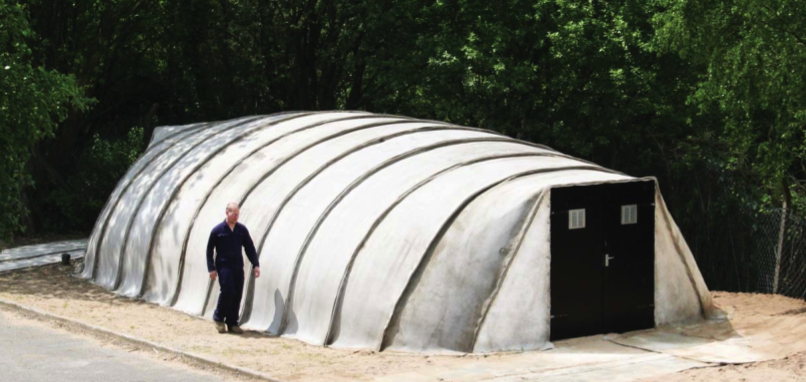
Julia was browsing tiny house videos on YouTube today and ran across this unusual shelter system. It’s been developed for military and disaster relief missions as a quickly deployed hardened shelter. The dome is made out of a concrete impregnated fabric.
To setup one of these structures you simple unroll it, inflate with a fan, and literally spray it with water. The structure will cure quickly and is usable in 12 to 24 hours depending on the size. The structure can then be bermed and/or buried for added protection from the elements.
I can see the value of such a quickly deployed bullet-proof building in a war zone. It’s ironic and sad that such an amazingly innovate technology had to be born out of such a dark need. But I am glad to see this come to market because it has incredible potential for quickly erected low-cost housing.
Concrete Canvas even offers a tiny house size dome. The 16 square meter (172 square feet) version can be setup by two people in 40 minutes and can be ready to use in 12 hours. That just makes my head spin.
Unfortunately it doesn’t sound like they’re marketing to owner-builders yet but if this looks like a solution you might be interested in visit Concrete Canvas for more information. Concrete Canvas is located in the UK.
Watch this video to see a larger version of this instant house get inflated and hosed.
Photo credit Concrete Canvas.

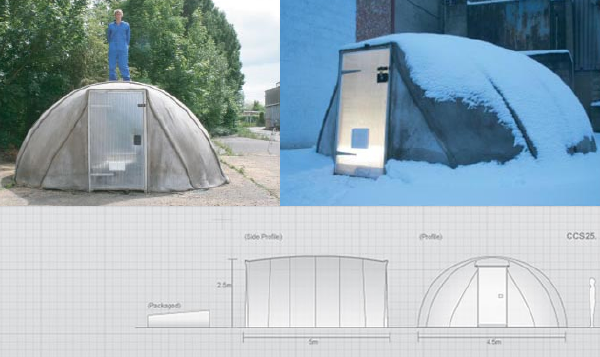


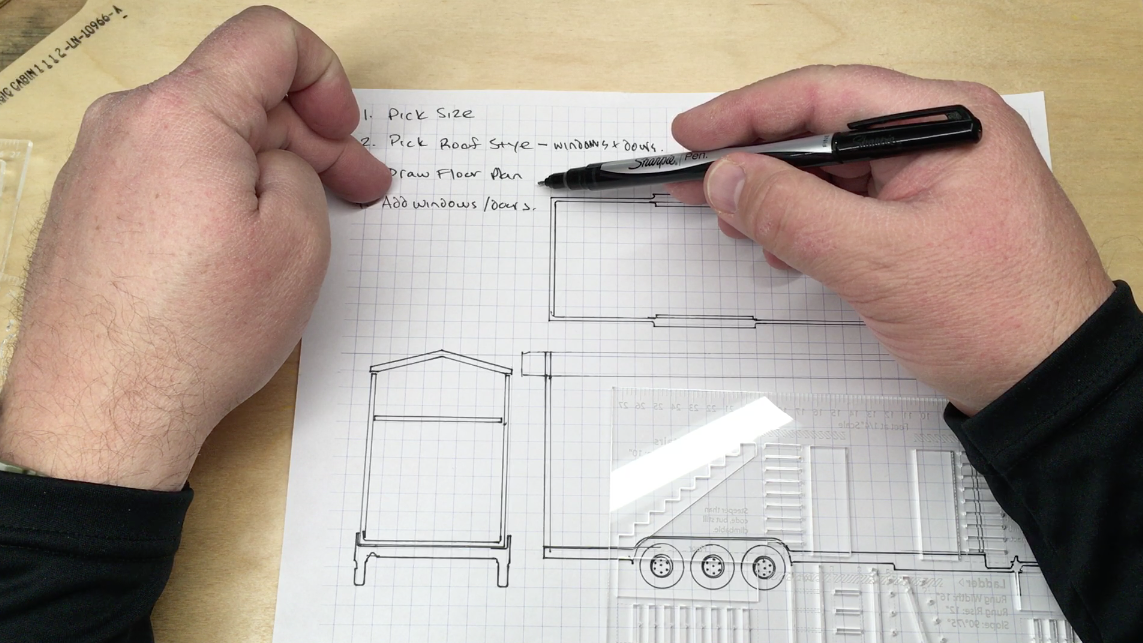
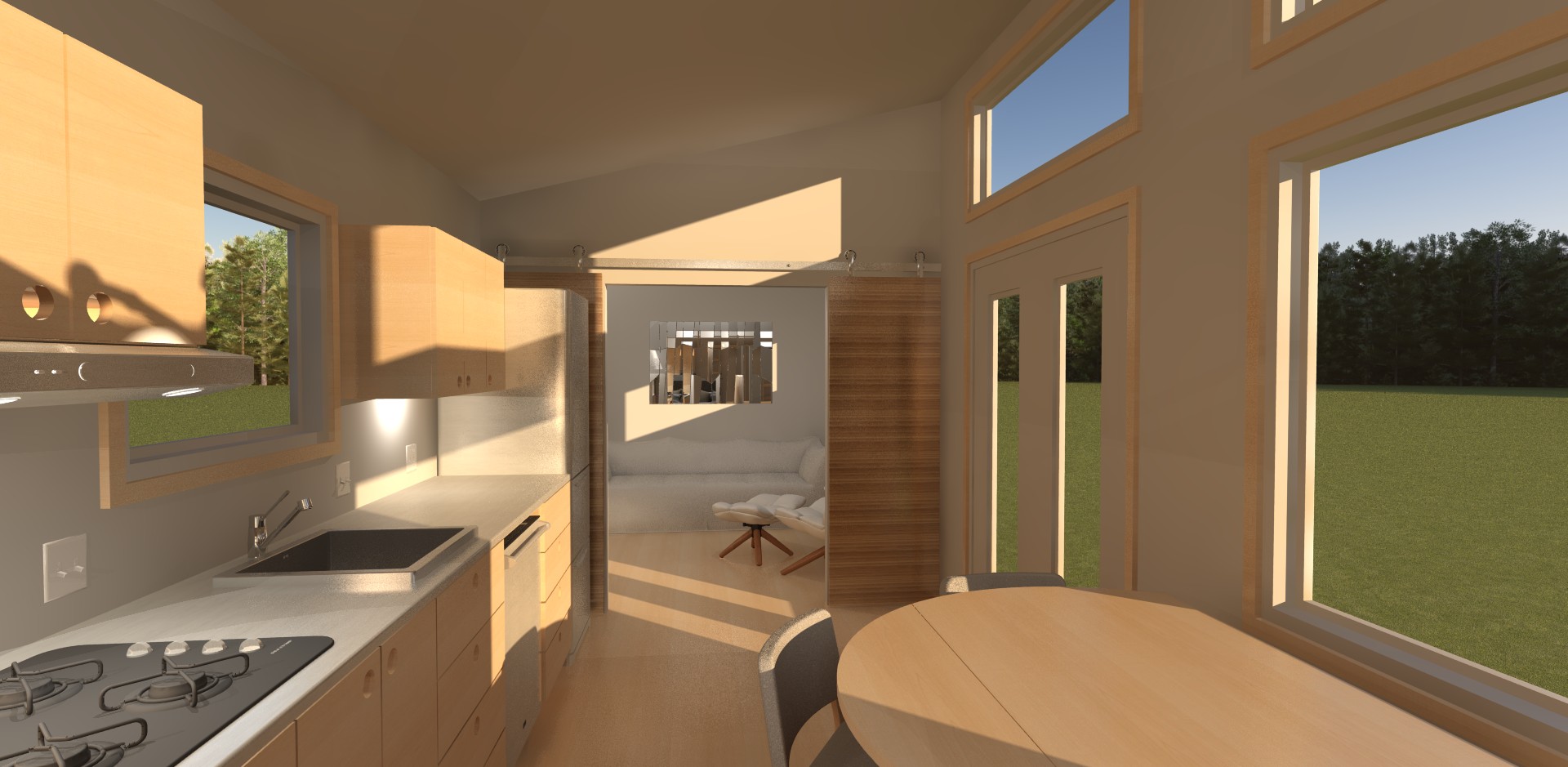

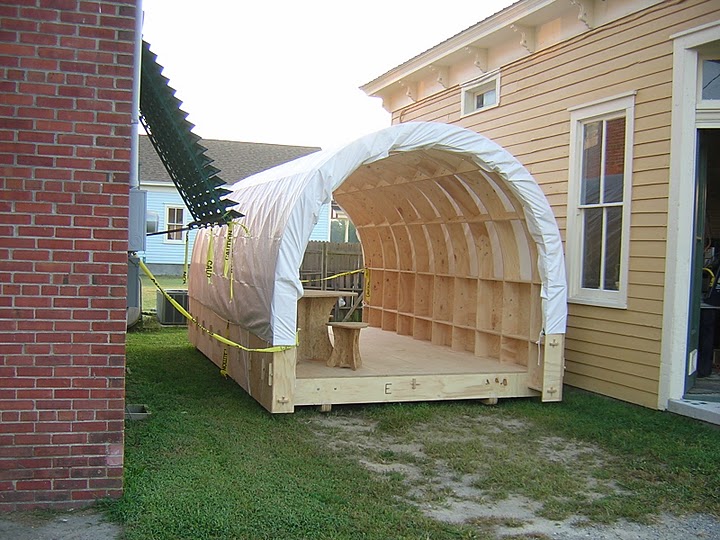
Thanks James… yeah imaging it semi-underground with planted roofs, little walkways between homes, over homes, surprise little courtyards, etc. Like a little hobbit-ville 🙂
That’s really neat. Watching the guy spray water on it reminds me of the chia-pet. Wouldn’t a chia-house be cool? Just add water.
I wonder how to DIY something like this. Maybe build a hoop house with pvc or metal pipe like they do with greenhouses and then cover with porous cloth, something like burlap covered with cement. Do it in sections with the overlapping sections sticking together. It’s interesting to think about. Any ideas?
I like these! You could make a neat little village out of these.
Concrete Canvas Shelters & No Prices!
Pissed off right away!
Won’t return to this site again!
Hi Tim,
Back when I was a full-time potter we used to build kilns out of a clay, sand, sawdust mixture. We’d pack it on top of an arch frame that was held up with a few blocks. When it had dried enough to hold itself up we’d drop the frame out. When the whole thing had dried it would be literally fired from the inside to harden the clay shell. A concrete layer would be added to the exterior later to protect it from the weather.
Back then I came up with an idea to build a ceramic house by making a giant catenary arch form on wheels and jacks that you’d use to build one arch segment at time. I’ll draw that up and post it here in the future. It would be like a giant clay kiln you live in. You could even glaze the walls prior to firing.
So… imagine doing that but instead of clay use a cement mixture. I suspect the proprietary cement mixture that concrete canvas is using has come kind of epoxy or rubberized binder in it. They may even be required to show the ingredients or raw minerals in an MSDS-like form on their site.
MSDS= Material Safety Data Sheets. I think these are required by OSHA in the US for workplaces. It tells workers how dangerous certain material in the workplace are.
So imagine mixing up a cement with other binders and not water. If the binders don’t chemically activate the cement but hold them together with the help of the fabric, it would possible to make a home made material like this… although after going through all that effort you might want to take another look at earth bags.
But there might be a hybrid of concrete layered with (or mixed with) other kinds of binders. Fiberglass (and other) fibers are actually commonly added to concrete to make it stronger. You might be able to find another reclaimed (trashed) material that would act as a binder to strengthen the concrete shell so that a think layer could be spread on a form. Plastic and tires comes to mind. Other binders could be added to the mix too to help it hold up too like expoxies
My main concern with all that, and even the concrete canvas, is the potential for off-gassing. Who knows what all those additives might do to interior air quality over time. This would be the thing I’d research carefully before attempting a house like this.
-Michael
Michael Janzen,
Very good points to consider. Long-term air quality inside the structure would be a VERY IMPORTANT consideration!
I think a LOT of the material options would depend on expected length of service — such as disaster relief or a long-term permanent residence or even as a ‘doomsday survival shelter’ — and the costs factor. A survivalist may be willing to include a Kevlar mess and re-bar, or even multiple layers with insulation between layers. But a Disaster relief structure may be planned strictly as temporary or ‘medium-term’ dwellings, and need to be as ‘cost-effective’ [cheap (-; ] as possible.
But the concept certainly opens up a WIDE variety of uses!
Getting an even stream of cleanish water to hydrate the structure might not be as easy in a war zone as in suburban England.
Actually they say you can use any water, like seawater. The steady stream part would be a challenge. I guess you’d need a water truck.
Thanks for all the ideas Michael!
I did find a little about burlap-cement construction:
http://www.zetatalk.com/shelter/tshlt04g.htm
About the chia-house idea, I was reading years ago about building a ferro-cement dome. The author said that if you wanted a more organic look to coat the outside of the dome with a mix of potting soil, grass seed, sand, and just enough cement to make it stick. Keep it wet and within a few weeks you should have a chia-house.
I’ve also had the idea of using ferro-cement to build a tiny trailer house. It would sorta look like a quonset hut on a trailer. But I don’t know if that could be done within the weight limits of a trailer. It would be different though.
“But I don’t know if that could be done within the weight limits of a trailer.”
I guess if you had lightweight additives and a binder you might be able to craft a thin lightweight shell.
But you know, in a previous post, someone suggested fiber-glassing foam like a surfboard to make a lightweight shell. That seems like a really interesting idea to me… except that it would be tricky to keep green.
Here’s that post where that comment was made: https://tinyhousedesign.com/2009/05/13/ultralight-teardrop-trailer-for-a-bicycle/
Yeah, that Tim R guy is really full of it! 🙂
Well… he’s in good company 🙂 LOL
I think this sort of quick structure could make an ideal storm shelter for tiny house dwellers living in tornado alley…especially if it were bermed or buried.
Good point Stephanie. It could actually be an even better solution in a region like that because it could serve an immediate emergency shelter but could continue to be used well after that and be less likely to be damaged by future tornadoes.
You guys are missing the whole point. The whole point is to build small and make it as green as possible. Make it low impact with all the creature comforts of the 21 century. I like taking small dia trees and flexing them into an arc to build my dome. I live in it and when I die, the structure dies too.. No impact.
Ralph… I love it! Yes you’re right your solution is several shades greener, but I don’t think we’re missing the point, just maybe not thinking extreme enough. 🙂
I saw a one of a kind structure very similar to this in the Mother Earth News magazine in the early 1970’s. I guess it is an idea who’s time may finally arrive.
Are they going to made available in the US?
too bad these have been out since 08 yet, have yet to really hit the open market.
funny,sad,and eye opening. if anyone has any updated information they should post it becasue so far the only real info is pretty dated.
sorry about typos
They now have a U.S. distributor http://concretecloth.milliken.com/Pages/news.aspx